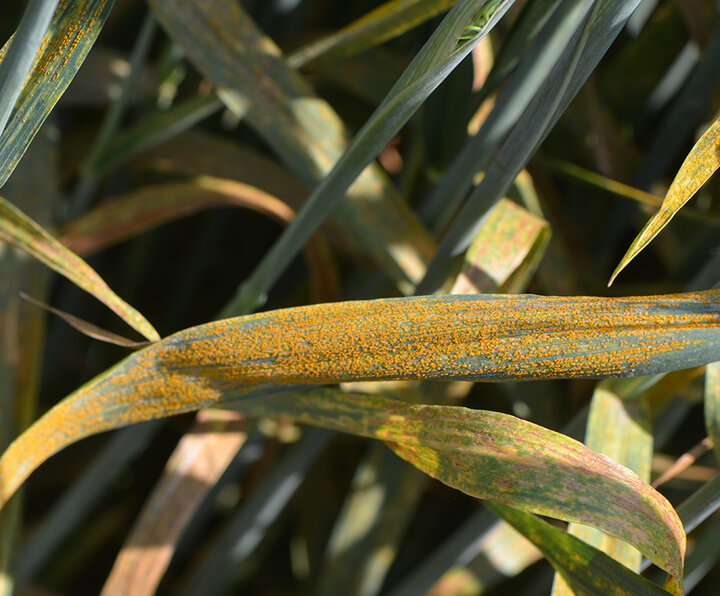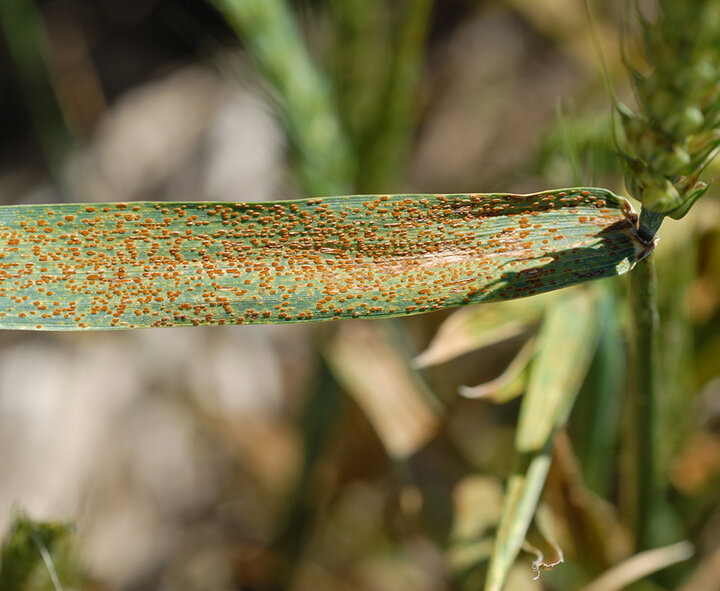





Due to above average temperatures this winter and going into the spring, coupled with moisture, stripe rust (Figure 1) and leaf rust (Figure 2) have moved north from southern states sooner than expected.
Both diseases, especially stripe rust, have been active in Oklahoma starting in early March and were active in Texas, Louisiana, and Arkansas earlier. Last week stripe rust was found in several counties in southern Kansas and leaf rust was found in northeast Kansas, indicating the likelihood that leaf rust overwintered in Kansas due to mild winter temperatures.
Stripe rust overwintered in western Colorado. The most recent update from Colorado indicates that stripe rust has been confirmed in the eastern part of the state, just northeast of Denver. The risk of stripe rust spores blowing into western Nebraska from northeast Colorado is real and adds to the risk of spores blowing in from Kansas.
Development of the wheat crop is likely to be earlier than normal due to the warm temperatures that have prevailed in January, February, and March. Given that stripe rust and leaf rust have been confirmed in Kansas, it is recommended that growers start scouting their wheat fields for early disease detection. Other diseases to look for include powdery mildew (Figure 3) and leaf spot diseases such as tan spot (Figure 4) and Septoria tritici blotch (Figure 5).
Current and projected weather conditions over the next several weeks are favorable for development and spread of wheat diseases. Monitor the disease situation in your field and consider an early fungicide application at the jointing growth stage especially if you see stripe rust and in cases where powdery mildew and leaf spot diseases are developing to moderate or severe levels. If you make an early fungicide application, it will most likely be necessary to make a second application at 50-100% flag leaf emergence to protect the flag leaf. To maximize returns, consider a low cost generic fungicide for the earlier application and a higher cost fungicide for the flag leaf timing.
In the event that the weather becomes favorable for Fusarium head blight (Figure 6), a third fungicide application may be warranted in some fields. If you make two or three applications, ensure compliance with label restrictions. Each fungicide has a maximum amount and number of times that it can be applied in one growing season and these limits should not be exceeded.
Table I, Fungicide Efficacy for Control of Wheat Diseases, contains a list of wheat fungicides and their efficacy ratings compiled by the North Central Regional Committee on Management of Small Grain Diseases (NCERA-184).
